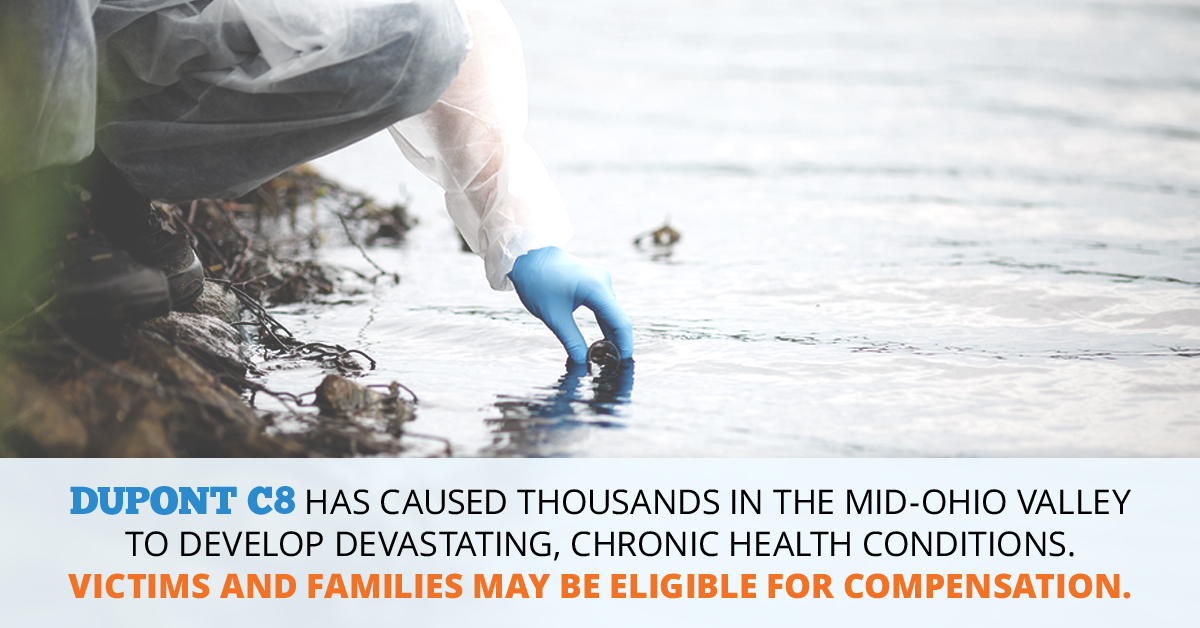History of DuPont’s C8 Chemical
DuPont has known about the potential toxic effects of C8 for decades, and as early as 1982, the company was warned about the “great potential for current or future exposure of members of the local community from emissions,” by its medical director, after DuPont’s own research showed workers there were getting sick. However, the company continued using the chemical, and by 1984, DuPont confirmed that C8 was getting into people’s drinking water by sending out workers to collect jugs of tap water from local schools and gas stations. That same year, minutes from a corporate meeting show that the company deliberately chose to continue using C8, after deciding that none of the alternative chemicals were “economically attractive.” In 1995, an internal document from DuPont expressed growing concerns “about the potential long term human health effects of these materials considering they all appear to have long biological half lives.” It wasn’t until 2006, in a voluntary deal with the EPA, that eight major American chemical companies, including DuPont, agreed to phase out C8 by 2015. Unfortunately, because C8 is formed by one of the strongest bonds in organic chemistry and does not biodegrade, it’s expected to post a risk to human health for years to come.


